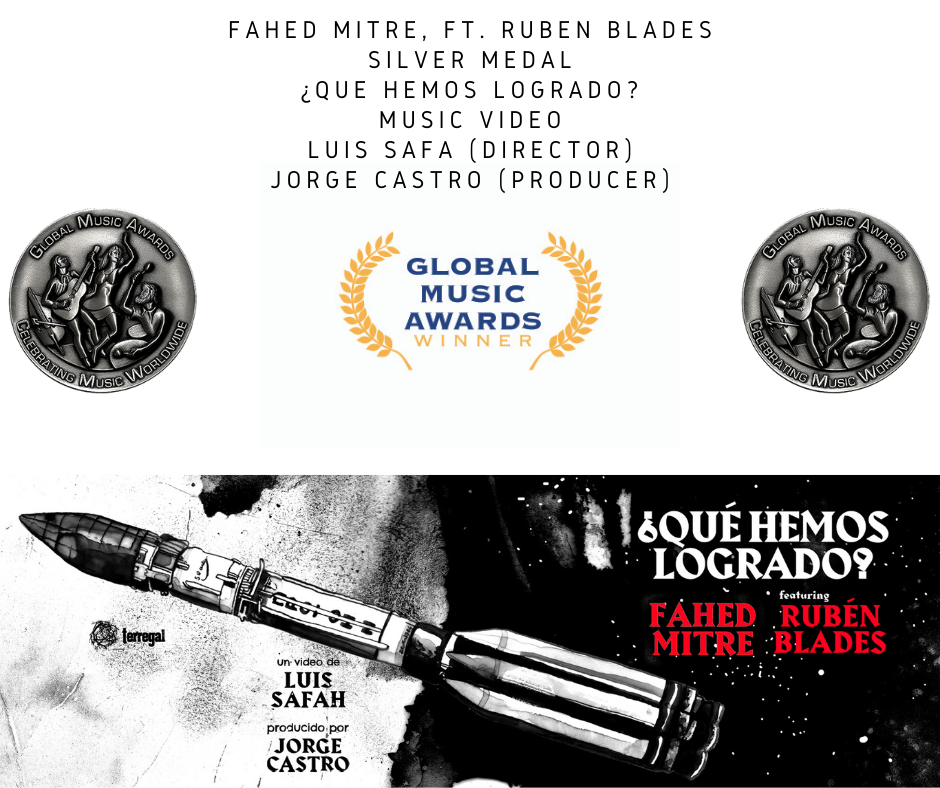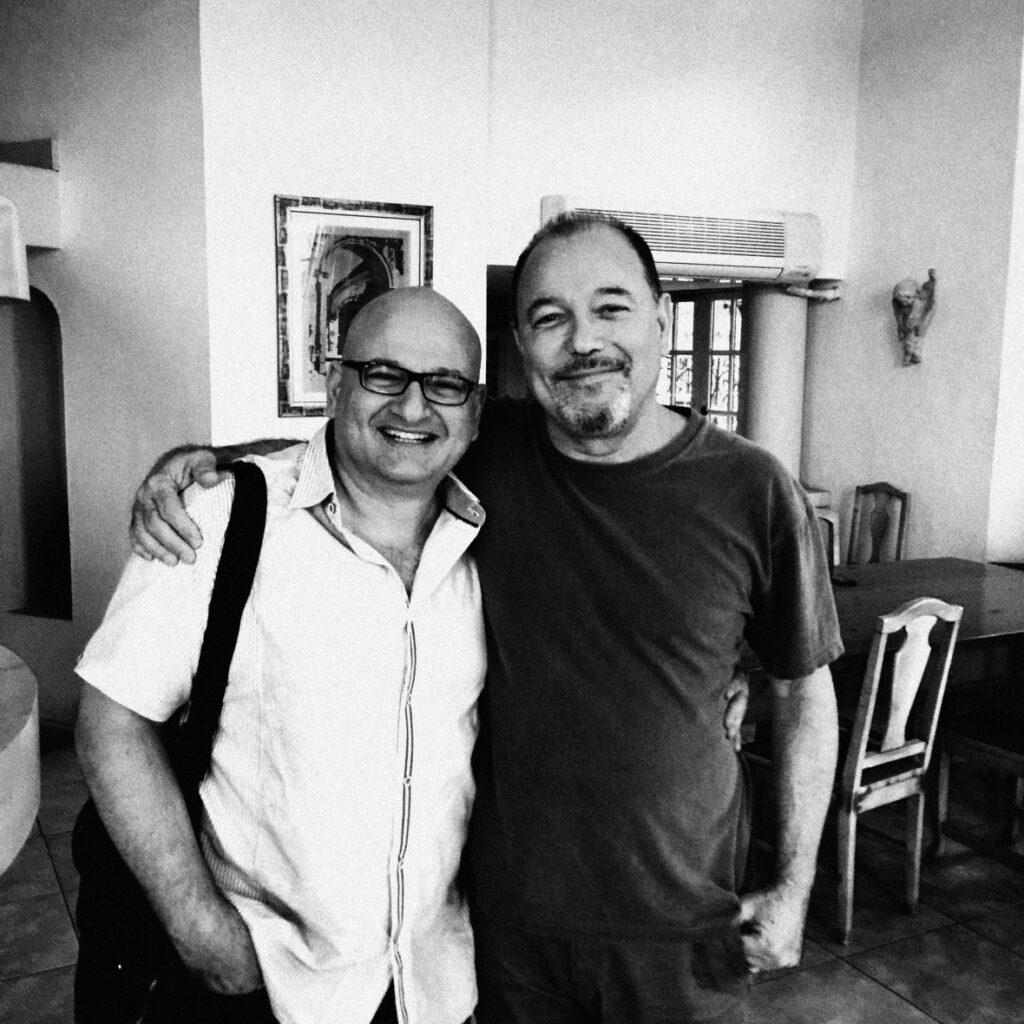Latinoamerica / Venezuela / Caraca
The also visual artist has the technology to complete his project in the middle of the COVID-19 pandemic.
The Venezuelan José Madera Niño & 3er.Mundo Orchestra launched its new song “Me gusta, pero…” in the voice of guest singer Memo Arroyave, accompanied by a video clip showing the other facet of Madera Niño: painting. This single is the fifth one to be included in his second album Matices.
The musician, composer, and orchestra leader said: “This song of my own was already in post-production when the pandemic was announced. It would not have been possible to complete this project from our homes without technology, the dedication and commitment of Irving Manuel and Jorge Estevez to mixing and mastering, the working hours of Alfredo Montilla for the editing of the video between Venezuela and Colombia“.

José “Flaco” Bermúdez was at the forefront of the musical direction and arrangements. Yomar Méndez “Caballo” (timbal), Arnaldo Guacarán “Patatín” (bongó and bell), Wilman Sánchez Jr. (trumpets), Hugo Olivero (saxophone), José Antonio Padilla (trombone), David González (bass) and Irving Manuel (piano); Rodrigo Mendoza and Eloy Ríos on backing vocals, with José Madera Niño (congas and minor percussion) as executive producer.
Matices combines the voice color diversity of each of the guest soloists thus far such as Pedrito Flores, Irving Manuel, and Charlie Guzman. This salsa album will be composed of ten pieces and shall have the participation of several performers: “We want to present the world with good music, food for the soul and for the spirit in this difficult time we are living“.
MULTIFACETED

It should be emphad that José Madera Niño is extremely multifaceted because in addition to be a visual artist as a profession, he is also a musician by conviction: “I have been drawing as far back as I can remember. When I was 14, I entered the School of Plastic Arts Cristóbal Rojas. I alternated my artistic activities with my high school studies and weekends were for the music”.
From there, he became a self-taught percussionist from a very young age thanks to the salsa boom in Venezuela in the mid-70s. This synergy between his two passions led him to form his orchestra: José Madera Niño & 3er Mundo, which flirts with Latin Jazz.
It seeks to extrapolate his plastic compositions to music and then create true works of art for the demanding music lover’s ear and the elegant dancer at the same time.
His first recording De amor, desamor y rumba took four years to come to light, due to the pauses imposed by self-management: “It is not easy to make an album without sound financial support. This first album is a sort of day-in and day-out chronicle of any ordinary individual. Inspired by all the music I listened to in my teens in simple and clear language”.

Journalist María Fernanda León recently interviewed him about his second CD Matices, consisting of ten musical tracks. He has released four of them on digital platforms from last year to 2020.

-Why the name 3er Mundo?
-The name thing was an irreverent way of saying that in spite of our disadvantages, we are capable of great things from passion, talent, and study. We are much more than a qualification.
-Why salsa and not another genre?
-I listen to all kinds of music. In fact, when deciding to live from it, we get to handle different genres and I enjoy that, but I have a special taste for salsa because it became part of my growth. It was always present in the atmosphere while I was playing in the street in my neighborhood, in high school, and on the bus when I was going to art school.
– Most of the songs are written in your handwriting, what inspires you?
-I was always interested in writing, I had a lot of unfinished ideas. When I began pre-production I dusted off all that material and turned it into songs.
-Why Matices?
– This production is a kind of canvas; music is the pigment, the stuff. The musicians and singers are their nuances. I think it is a different production from the first one, but the same essence.
-You changed your concept of an album with only one performer. Now you invited several of them…
-For me, it was very important to build a sonority for the public to recognize us when listening to one of our songs. Gustavo Gerardo was for a long time the voice that identified us, but it is not easy to hold someone if you cannot guarantee economic stability. Besides, he was already planning to start a career as a soloist, which by the way is already beginning to bear its first fruits at an international level.
-Who is participating?
-In this second production I have Pedrito Flores, who is an excellent singer and inherited this responsibility of being at the forefront of the band in live performances. Besides, I am privileged to have several guest vocalists such as Rodrigo Mendoza, Irving Manuel, Charlie Guzmán, and Memo Arroyave, among others that I will soon announce. All this with the intention of reaching a wider audience. I think such alliances are beneficial for the genre.
-When will all the songs come out of the oven?
-I have been presenting the songs as singles. Every month or every 45 days I make a release until completing the ten songs. Later last year, I have been released four songs. However, the pandemic that affects the entire world delays the production a little bit further, but we continue to work.
– You are an artist. How do you shuttle between your two passions?
-It’s not easy but I think it would be more difficult not to. I’m not very organized so I live in a constant effort to divide my time. I have participated in more than sixty group exhibitions and three solo exhibitions. My work is present in several art galleries and private collections.

-Your son also ventured into salsa last year. What do you think of the support offered to talent today?
-I think the boys are increasingly better prepared to meet the challenges.
The industry has changed and maybe those of us who have years of experience years in the business spend more time assimilating it. Young people know that besides recording on their own, they have to handle the many forms of promotion, know about graphic design, marketing, etc. That is very good because there are no record labels that invest in emerging artists. There are lots of young talent.
-How do you see salsa in Venezuela? Is there sufficient promotion and support?
-There is not sufficient support so I think we cannot wait any longer, we have to conduct ourselves. Work hard toward our dreams, we must learn to use the tools that technology offers us.
-Do you consider your albums a work of art?
– Yes, they consist of the same elements: color, balance, space, and atmospheres.
-What does José Madera Niño want to show every time he is on stage?
-A good show, a well-assembled band, a costume according to the situation, in short, the respect the public deserves.
Editor/ Lic. María Fernanda León
President of San Juan Producciones
Photos/ Courtesy: José Madera Niño

Por Maria Fernanda Leon, ISM Corresponsal – Caracas – Venezuela
















